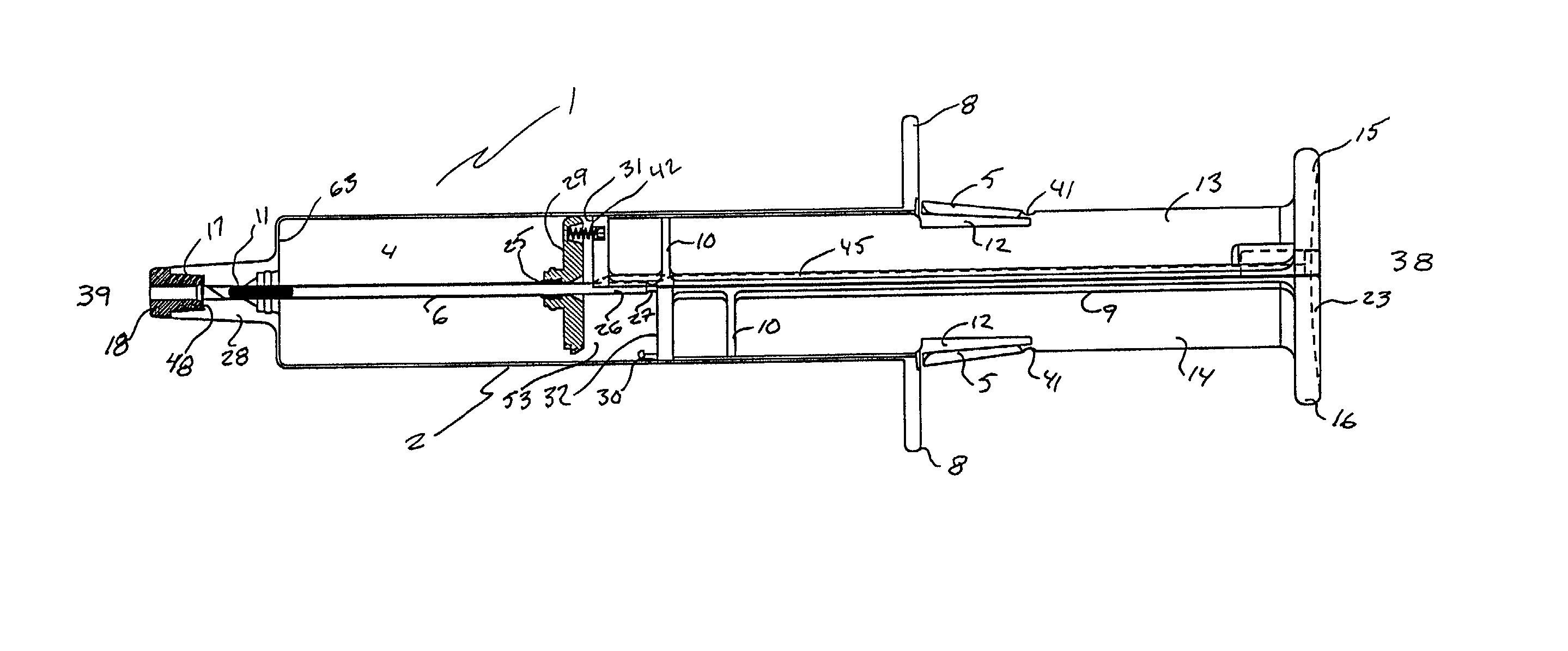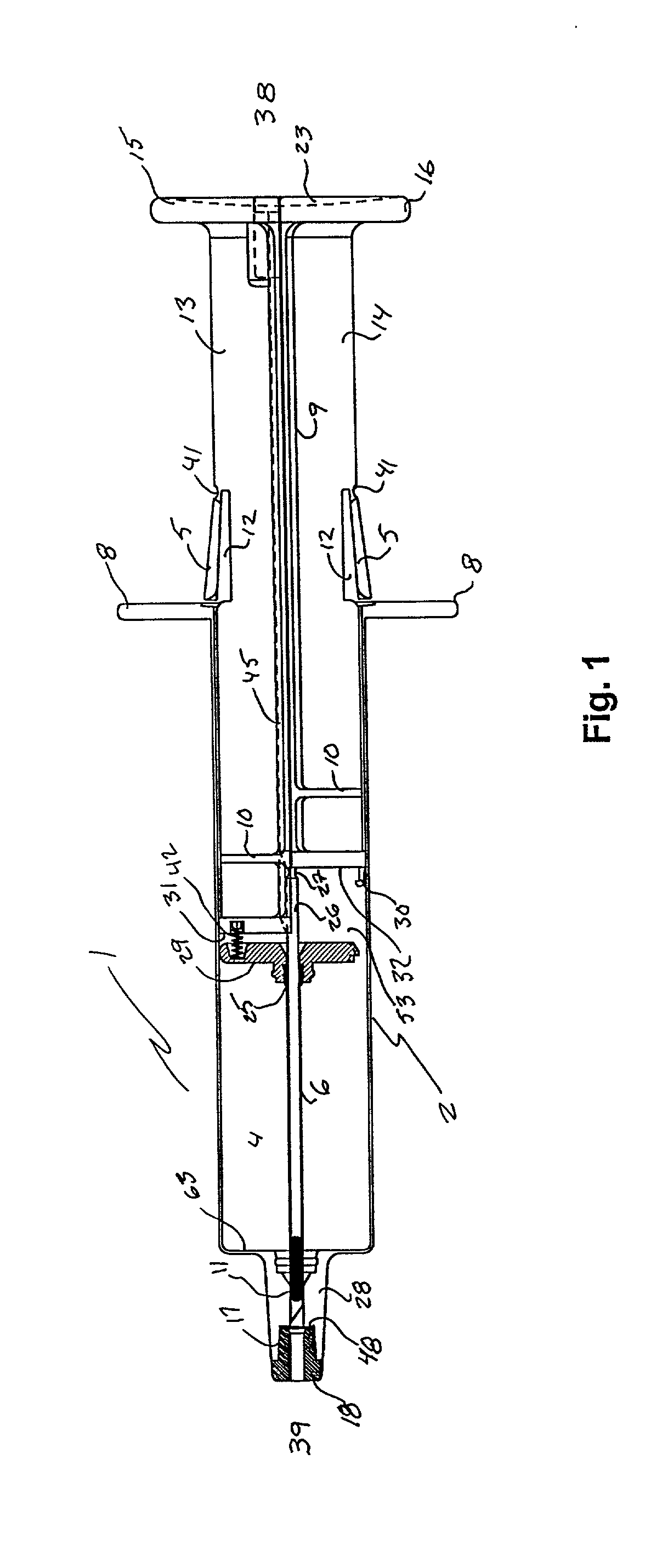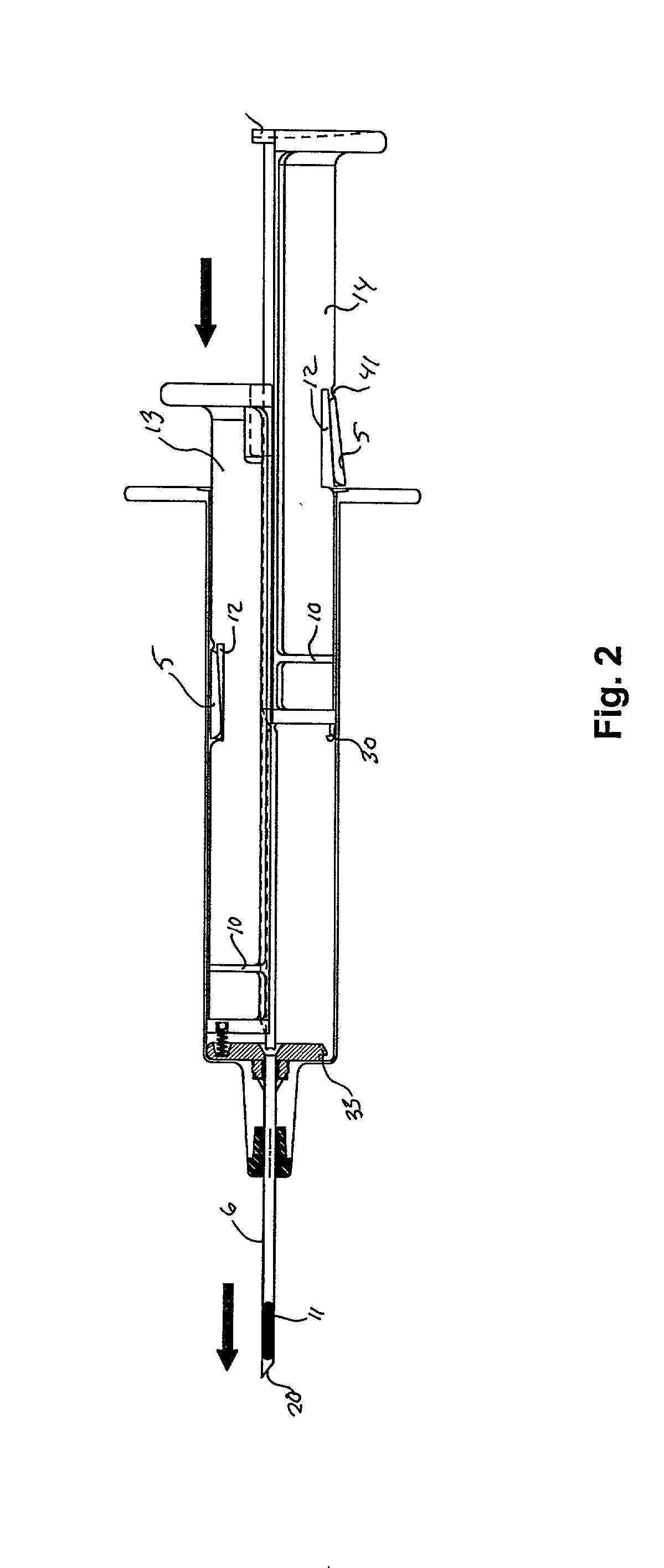Hypodermic implant device
a technology of implant devices and hypodermic implants, which is applied in the direction of intravenous devices, other medical devices, infusion needles, etc., can solve the problems of inability to completely self-destruct devices, devices with extended needles, and a hazard of accidental needle sticks to caregivers, patients, researchers, etc., to avoid infection transmission, safe disposal of implant devices, and the effect of avoiding infection
- Summary
- Abstract
- Description
- Claims
- Application Information
AI Technical Summary
Benefits of technology
Problems solved by technology
Method used
Image
Examples
Embodiment Construction
[0006] With the proliferation of many blood borne contagious diseases, such as AIDS and Ebola, the frequent use of hypodermic implant devices poses a serious risk of infection. Many times, it is not possible to determine for an extended period of time whether a caregiver or researcher has been infected as a result of a needle sticks. The result can be actual infection with a sometimes-lethal blood borne pathogen or a prolonged period of anguish and worry only to discover that the user is not infected. Use of hypodermic implant devices pose significant risks in the everyday clinical practice of medicine, whether the patient be a human or some other specie of animal, and in the outdoor implantation of animals for research, tracking, or identification.
[0007] It-has long been recognized that the needle stick risk factor needs to be controlled. Training and care while using hypodermic implant needles is emphasized. But, this, in of itself, is not enough, considering the high probability ...
PUM
 Login to View More
Login to View More Abstract
Description
Claims
Application Information
 Login to View More
Login to View More - R&D
- Intellectual Property
- Life Sciences
- Materials
- Tech Scout
- Unparalleled Data Quality
- Higher Quality Content
- 60% Fewer Hallucinations
Browse by: Latest US Patents, China's latest patents, Technical Efficacy Thesaurus, Application Domain, Technology Topic, Popular Technical Reports.
© 2025 PatSnap. All rights reserved.Legal|Privacy policy|Modern Slavery Act Transparency Statement|Sitemap|About US| Contact US: help@patsnap.com



